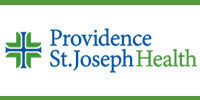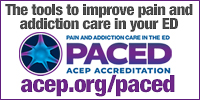- September 15,2025 | ISSN 1940-6967
- The National Association Of Medical Doctors
Featured Sponsors
What Is Guideline Creep In Medicine?
By Larry Kaskel, MD
I am an internist and, once upon a time, a card-carrying lipidologist. I have spent years watching medicine’s “standards of care” quietly stretch like elastic waistbands. What begins as a targeted therapy for a small group of high-risk patients slowly expands until everyone and their grandmother is expected to be on it. That phenomenon has a name: guideline creep.
How it works
The cycle is simple:
- A landmark trial shows benefit in a high-risk population.
- The results are reported as impressive relative risk reductions.
- Guideline committees, often with pharmaceutical “input,” generalize the findings.
- Over time, optional becomes recommended, recommended becomes standard, and eventually, you are considered negligent if you do not apply it to everyone.
- Guideline creep is medicine’s version of “mission creep.” Once you notice it, you see it everywhere.
Case study: Atrial fibrillation
The first AF trials of warfarin enrolled older patients with prior strokes or multiple risk factors. The absolute risk reduction (ARR) was real: 4 to 6 percent fewer strokes per year, with an NNT of approximately 20.
Fast-forward three decades. With DOAC marketing in full swing and CHA₂DS₂-VASc scores as our guide, virtually every AF patient, down to the 65-year-old with controlled hypertension, is told to anticoagulate. In these low-risk cases, ARR is closer to 0.5 percent per year, NNT >200. That is a long way from the original evidence.
Statins: From sick to well
The Scandinavian Simvastatin Survival Study (4S, 1994) saved lives, no question. Men with prior MI, LDL sky-high, smoking like chimneys. ARR was 4 to 5 percent over five years.
But now? Guidelines have crept so far that a healthy woman with borderline cholesterol and a 10-year ASCVD risk of 5 percent is nudged toward a lifelong prescription. Here the ARR is <1 percent over a decade, but the “standard of care” box still gets checked.
Blood pressure and diabetes
We have done the same with hypertension (lowering the threshold to 130/80 overnight created millions of new “patients”) and diabetes (rebranding healthy people as “prediabetic”). Each shift means more prescriptions, more monitoring, more fear.
Why it happens
- Relative risk framing hides how small the real benefit is.
- Pharma sponsorship ensures guidelines align with what can be billed and sold.
- Defensive medicine makes clinicians afraid to be out of step.
- EMRs and quality metrics hard-wire the broadest interpretation of guidelines.
The cost
Guideline creep medicalizes the well, overtreats the low-risk, and siphons resources away from interventions that actually move the needle: diet, activity, and the infectious roots of chronic disease. It is the slow erosion of common sense in the name of “standard of care.”
My confession
As a “lipidologist in recovery,” I will admit I played along. I gave talks for drug companies, quoted relative risk reductions, and nodded at guideline slides that looked scientific but were quietly expanding their reach. It took me years, and the collapse of the HDL hypothesis, to realize how much creep had seeped into my own practice.
Closing line
Guideline creep is not evidence-based medicine. It is evidence-stretched medicine.
Larry Kaskel is an internist and “lipidologist in recovery” who has been practicing medicine for more than thirty-five years. He operates a concierge practice in the Chicago area and serves on the teaching faculty at the Northwestern University Feinberg School of Medicine. In addition, he is affiliated with Northwestern Lake Forest Hospital.
Articles in this issue:
- Highest On-Call Pay, By Physician Specialty
- Are You Ready For Measles' Wrath?
- The Skills Boosting Physicians’ Value In The Next 5 Years
- Why Doctors Regret Specialty Choices In Their 30s
- The Doctors Building A Public-Health Universe Outside The Government
- The Relative Value Of Relative Value Units
- What Is Guideline Creep In Medicine?
Top Physician Opportunities
Journal of Medicine Sign Up
Get the Journal of Medicine delivered to your inbox.
In This Issue
- Highest On-Call Pay, By Physician Specialty
- Are You Ready For Measles' Wrath?
- The Skills Boosting Physicians’ Value In The Next 5 Years
- Why Doctors Regret Specialty Choices In Their 30s
- The Doctors Building A Public-Health Universe Outside The Government
- The Relative Value Of Relative Value Units
- What Is Guideline Creep In Medicine?
Archives
Masthead
-
- Editor-in Chief:
- Theodore Massey
- Editor:
- Robert Sokonow
- Editorial Staff:
- Musaba Dekau
Lin Takahashi
Thomas Levine
Cynthia Casteneda Avina
Ronald Harvinger
Lisa Andonis
Leave a Comment
Please keep in mind that all comments are moderated. Please do not use a spam keyword or a domain as your name, or else it will be deleted. Let's have a personal and meaningful conversation instead. Thanks for your comments!















*This site is protected by reCAPTCHA and the Google Privacy Policy and Terms of Service apply.